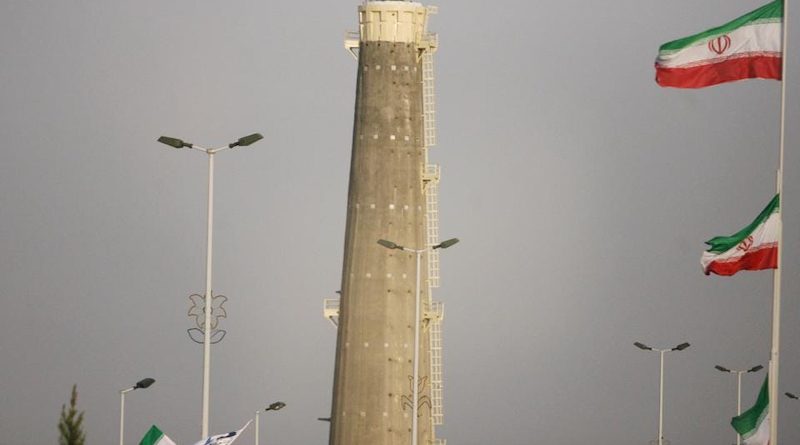Don’t Expect Energy Sanctions To Stop Iran’s Crackdown
By Ariel Cohen, Alum of The Fletcher School of Law and Diplomacy at Tufts University
Photo by Majid Saeedi/Getty Images
The Iranian government’s violent crackdown on protests stemming from the murder of Mahsa Amini by Iran’s Morality Police is driving the West to levy further sanctions against Iran. The US Treasury Department has already placed extensive financial sanctions on the members of Iran’s Morality Police with the US State Department promising more to follow. With the protests continuing to gain steam as Iran’s oil workers simultaneously go on strike – a vital part of the Shah’s 1979 downfall – there is widespread hope that Iran’s protestors can topple the Mullahs and bring the country back into the community of nations.
Unfortunately, there is reason to be pessimistic. Iran’s history of repressed protests attests to how extremely difficult it is to topple an entrenched theocratic dictatorship. Iran has also been sanction-proofing its energy sector to withstand the escalating sanctions that come with each new episode of repression. Iran has plenty of experience in sanctions avoidance, building energy-exporting infrastructure, finding new export partners, and increasing domestic technical expertise. Even as domestic support erodes, Tehran is counting on foreign oil and now arms sales revenue to sustain the regime.
Iran preemptively made moves to weaken western sanctions before these latest protests even began. Last month, Iran’s oil minister Javad Owji announced that Iran was looking to the East and courting investment from Japan, Korea, and China while deepening its political and energy cooperation with friendly countries, especially China and Russia. This followed a 40-billion-dollar gas swap deal between Russia and Iran that has supported both regimes as they face domestic and foreign adversaries.
To Iran’s immediate east, it has made moves to deepen its relationship with Pakistan as a vital first step. Connecting with perennially energy-hungry Pakistan, especially in the wake of Pakistan’s floods and self-inflicted energy policy failures, would give Iran a massive adjacent market. A direct connection between the two via the proposed “peace pipeline” would be the biggest sanction-proofing action Iran could undertake, but Iran would need help. Russia’s Gazprom has already volunteered itself. This pipeline, planned since the 1990s and repeatedly canceled or delayed, still has far to go before completion. Should it get up and running, it would create an insulated income stream allowing Iran a land route to its most significant foreign benefactor, China.
China is the center of gravity that is animating much of Iran’s foreign and energy policy. Iran recently announced it would join the Chinese-dominated Shanghai Cooperation Organization (SCO), working out a memorandum of understanding with its members. It is China, not Pakistan, will be the actor that constructs the “peace pipeline” inside Pakistan so Pakistan can legally dodge any sanctions levied against the pipeline.
The SCO, despite the numerous disputes and contradictions between its members, is constructing itself as an authoritarian alternative to the West and NATO. The SCO is all too happy to help Iran in its sanction-proofing initiatives and ensure the Mullahs in Tehran remain unthreatened by their own people while Beijing gains access to cheap oil.
Iran’s energy policy moves are not restricted to its hydrocarbon efforts. Iran is expected to include nuclear power in its dealings with the SCO. Ever since the US walked away from the 2015 nuclear deal with Iran, Moscow and Beijing’s energy and wider geopolitical cooperation with Tehran have increased manifold. This nuclear integration and the potential for a totally unhindered uranium supply from Russia could spell disaster for the West. This cooperation would not only aid the mullahs’ quest for nuclear weapons, but the diversification of Iran’s energy sector will free up more oil for exports and further insulate the regime.
Closer bilateral relations between Moscow and Tehran have already resulted in Iran supplying Russia with drones for use in Ukraine, joint naval drills, and wider economic cooperation. With the domestic turmoil in Iran forcing Tehran’s hands, these trends all look to accelerate rapidly and consciously. Unfortunately, it appears that Iran’s strategy is working, and energy-dependent foreign revenue streams will keep growing unless the U.S. puts its foot down.
In the same way that sanctions against Russia were comprehensively crafted to undermine its war machine without prompting total integration with China, sanctions against Iran must be crafted so as not to encourage further integration with the SCO. This is easier said than done but can be done via Western support and engagement with Pakistan and India by encouraging both parties to become more involved in the Arabian Peninsula while simultaneously investing in their domestic energy production. It can also be done by strengthening relations with Azerbaijan and Turkmenistan and encouraging energy exports to Pakistan via the Middle Corridor.
The West must also summon the political courage to invest in its own energy sources outside the control of OPEC+. The formula isn’t innovative, but it is effective: LNG as a bridge fuel and investment in nuclear power until more renewables are online.
If the West is sincere about using sanctions to amplify the protestors’ chances of success as well as hinder the rise of the SCO as an authoritarian counterweight, it must construct a more sophisticated and energy-conscious set of sanctions. While it is important to commit to the sanctions already in place, and every bit of support should be given to the protestors, the West must also consider targeting the Iranian energy exports sector, especially technology, finance, shipping, and insurance. The sanctions levied against members of Iran’s Morality Police and Revolutionary Guard Corps are a good start, but not enough. If we cannot rise to these challenges, expect more turbulence emanating from Iranian rather than just protests.
This piece is republished from Forbes.

